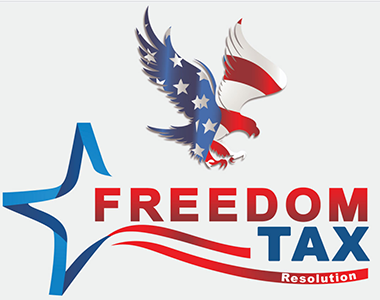Unraveling the Tax Maze: Your Path to Penalty Relief
Tax season is notorious for causing stress and anxiety, especially for those facing penalties due to late payments or filing errors. Fortunately, the Internal Revenue Service (IRS) offers a lifeline known as the First-Time Penalty Abatement (FTA). In this comprehensive guide, we will delve into the details of the First-Time Penalty Abatement, explore who qualifies, and provide a step-by-step approach to navigating this process. Therefore, by the end, you’ll have a clear understanding of how to leverage this one-time forgiveness policy and mitigate the financial impact of tax penalties.
Understanding the First-Time Penalty Abatement
The First-Time Penalty Abatement (FTA) is a valuable provision offered by the Internal Revenue Service (IRS) to provide relief for taxpayers who find themselves facing penalties for the first time. This provision is designed with the recognition that individuals and businesses may occasionally make mistakes, miss deadlines, or face unforeseen circumstances that lead to tax compliance issues. Besides, the FTA serves as a tool for the IRS to promote compliance without unduly burdening taxpayers with excessive penalties.
The Purpose of the First-Time Penalty Abatement
The primary purpose of the FTA is to encourage voluntary compliance with tax laws while acknowledging that everyone can make an occasional error. Hence, by offering a one-time penalty forgiveness policy, the IRS aims to provide taxpayers with an opportunity to correct their compliance without imposing severe financial consequences. This aligns with the IRS’s broader mission of fostering a tax system that is fair, transparent, and encourages taxpayer cooperation.
Eligibility Criteria for the First-Time Penalty Abatement
To fully grasp the FTA, it’s crucial to understand the eligibility criteria that determine who can benefit from this provision:
1. Clean Compliance History:
One of the fundamental requirements for FTA eligibility is maintaining a clean compliance history. This means that the taxpayer should have a record of filing all required tax returns and either paying the taxes owed or making suitable arrangements to settle their tax liabilities.
2. Three-Year Rule:
The request for penalty abatement must be submitted within three years of the original due date of the tax return or the date the return was filed, whichever is later. In addition, this timeframe is established to ensure timely resolution of tax compliance issues.
3. No Prior Penalties:
The taxpayer should not have incurred significant tax penalties in the past. The FTA is explicitly designed to assist those facing penalties for the first time, recognizing that occasional mistakes can happen.
Benefits of the First-Time Penalty Abatement
Beyond simply avoiding a specific penalty, the FTA offers several benefits to eligible taxpayers:
a. Financial Relief:
Qualifying for the FTA provides immediate financial relief by eliminating or reducing the penalties associated with late payments or filing errors. This can significantly lessen the overall financial burden on taxpayers.
b. Preservation of Compliance Record:
Successful use of the FTA helps preserve the taxpayer’s compliance record. Hence, it allows individuals and businesses to rectify their tax affairs without the stain of a significant penalty, which can be crucial for maintaining a positive compliance history.
c. Encouragement for Future Compliance:
By offering a one-time forgiveness policy, the FTA encourages taxpayers to take corrective actions and strive for better compliance in the future. Furthermore, it aligns with the IRS’s goal of fostering voluntary compliance within the tax system.
Qualifying for the First-Time Penalty Abatement
To take advantage of the First-Time Penalty Abatement, taxpayers must meet specific criteria.
- Clean Compliance History: One crucial criterion is maintaining a clean compliance history. Therefore, this entails ensuring that all required tax returns have been filed and that any taxes owed have been paid or suitable arrangements have been made.
- Three-Year Rule: The request for penalty abatement must be submitted within three years of the original due date of the tax return or the date the return was filed, whichever is later.
- No Prior Penalties: The taxpayer should not have incurred significant tax penalties in the past. The FTA is explicitly designed to assist those facing penalties for the first time.
Navigating the Process
Here’s a detailed step-by-step guide to navigating the First-Time Penalty Abatement process effectively.
1. Review Your Compliance History
Before proceeding, meticulously review your compliance history. Make sure that all necessary tax returns are filed, and any taxes owed are either paid or arrangements have been made.
2. Gather Necessary Documentation
Collect all relevant documentation, including tax returns, penalty notices, and any additional supporting documents that may strengthen your case.
3. Submit a Penalty Abatement Request
Craft a formal letter to the IRS requesting the First-Time Penalty Abatement. In particular, clearly state the reason for the penalty, acknowledge your compliance history, and provide any supporting information.
4. Use the Correct Form
If the penalty is associated with a specific tax return, use the appropriate form (e.g., Form 843) to request the penalty abatement.
5. Submit the Request Timely
Ensure that you submit the penalty abatement request within the three-year window from the original due date of the tax return or the date the return was filed.
6. Follow Up
After submitting your penalty abatement request, monitor its status. While the IRS typically responds within a reasonable timeframe, it’s crucial to follow up if you haven’t received a response.
Sealing Your Financial Future: Mastering the Art of Tax Penalty Resolution
Navigating the First-Time Penalty Abatement process can be a vital strategy for alleviating the financial strain associated with tax penalties. By understanding the eligibility criteria and following the detailed steps outlined in this guide, taxpayers can effectively utilize this one-time forgiveness policy. In particular, addressing tax issues proactively and exploring available options is key to ensuring a smoother financial journey.
Posted by Editor.


